

SOUTHEAST
March 2010

1 of 2


SOUTHEAST
March 2010


1 of 2
It’s a gray March morning in Virginia, chilly and damp, an appropriate day to be in the Great Dismal Swamp.
Driving south to see my brother in North Carolina, I had decided to check out the area, but the gloomy drizzle is
sure to discourage any herps from being active this day.
Still, a few stubborn turtles insist on sunbathing, despite the absence of any sun.
And, lucky for me, even a Spotted Turtle is out and about, searching for a mate regardless of the weather. Some
urges simply won’t be dampened.
In fact, some urges are best when wet.
That night Ron and I visit a hot tub of amphibian delight, a breeding pond crowded with amorous anurians.
Male toads cause the water to ripple from the vibration of their trilling.
Attracted by the calls, females approach and the romantic couples embrace, with rivals in hot pursuit.
Fortunately, there’s enough love to go around, and everyone gets a turn.
At another vernal pool we wade into brown water in search of salamanders.
This female Spotted Salamander is attaching fertilized eggs to a twig that will anchor the egg mass.
New eggs are clear, but older masses turn green, the result of symbiotic algae living in the gelatinous envelope of
each egg. As the embryos grow, they eliminate carbon dioxide and nitrogen, which feeds a unique species of algae
found only in Spotted Salamander eggs. The algae in turn provide the developing embryos with oxygen, much
needed due to the anoxic water, and because the structure and composition of the egg mass makes it difficult for
oxygen to penetrate the envelopes.
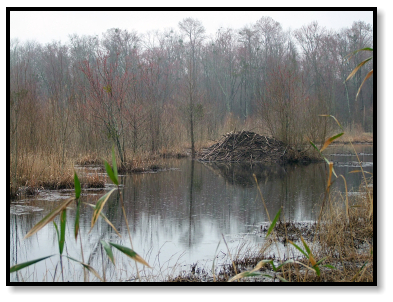
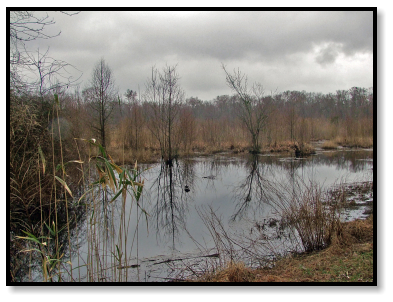
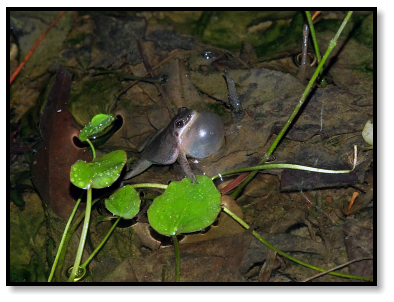

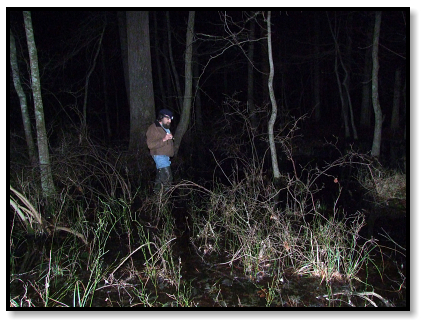
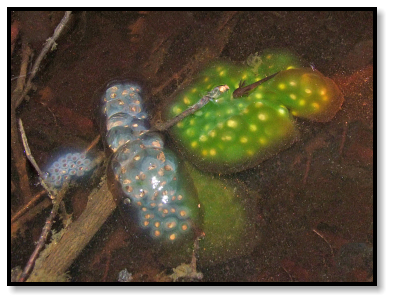
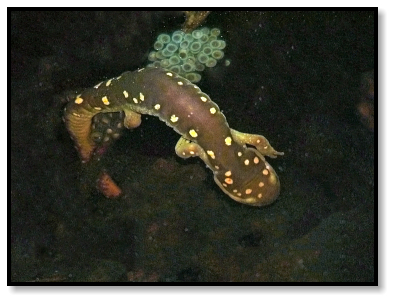
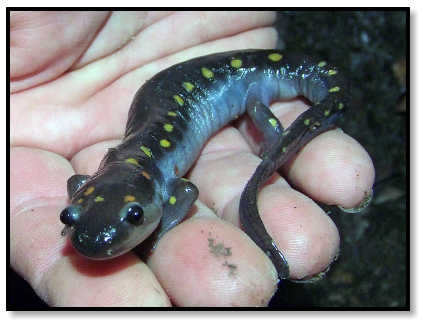
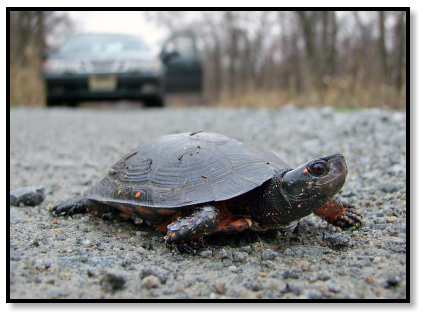
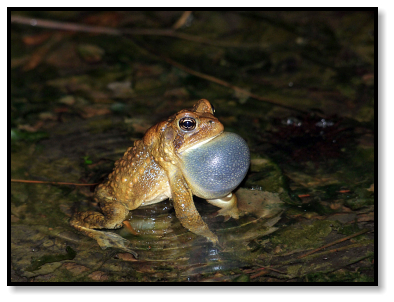
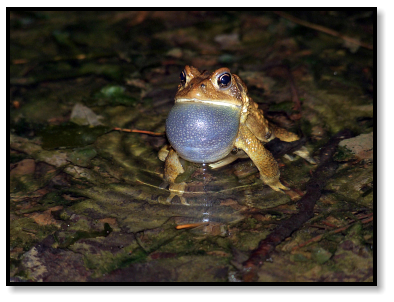
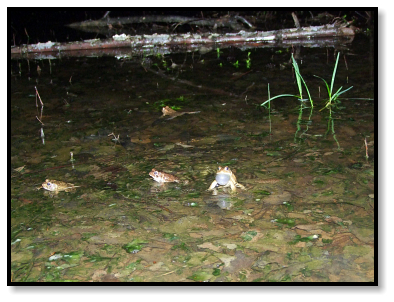
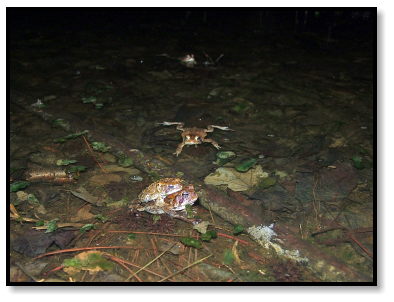

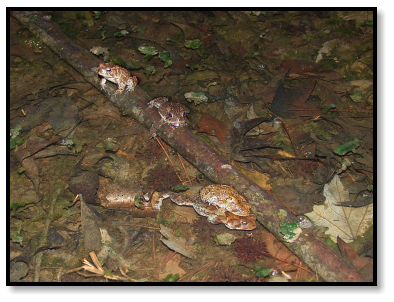
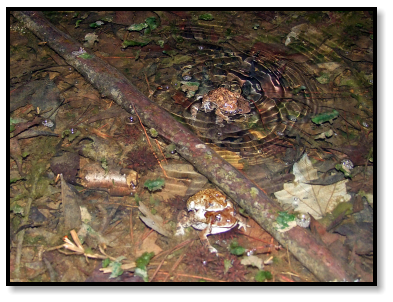
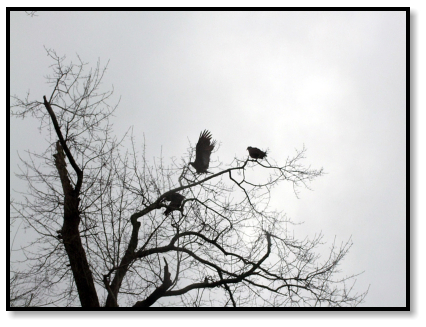
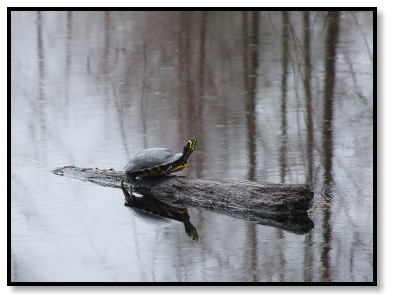
Yellow-bellied Slider
Trachemys scripta
Painted Turtle
Chrysemys picta
Spotted Turtle
Clemmys guttata
Upland Chorus Frog
Pseudacris feriarum
Southern Toad
Bufo terrestris
Spotted Salamander with eggs
Ambystoma maculatum









